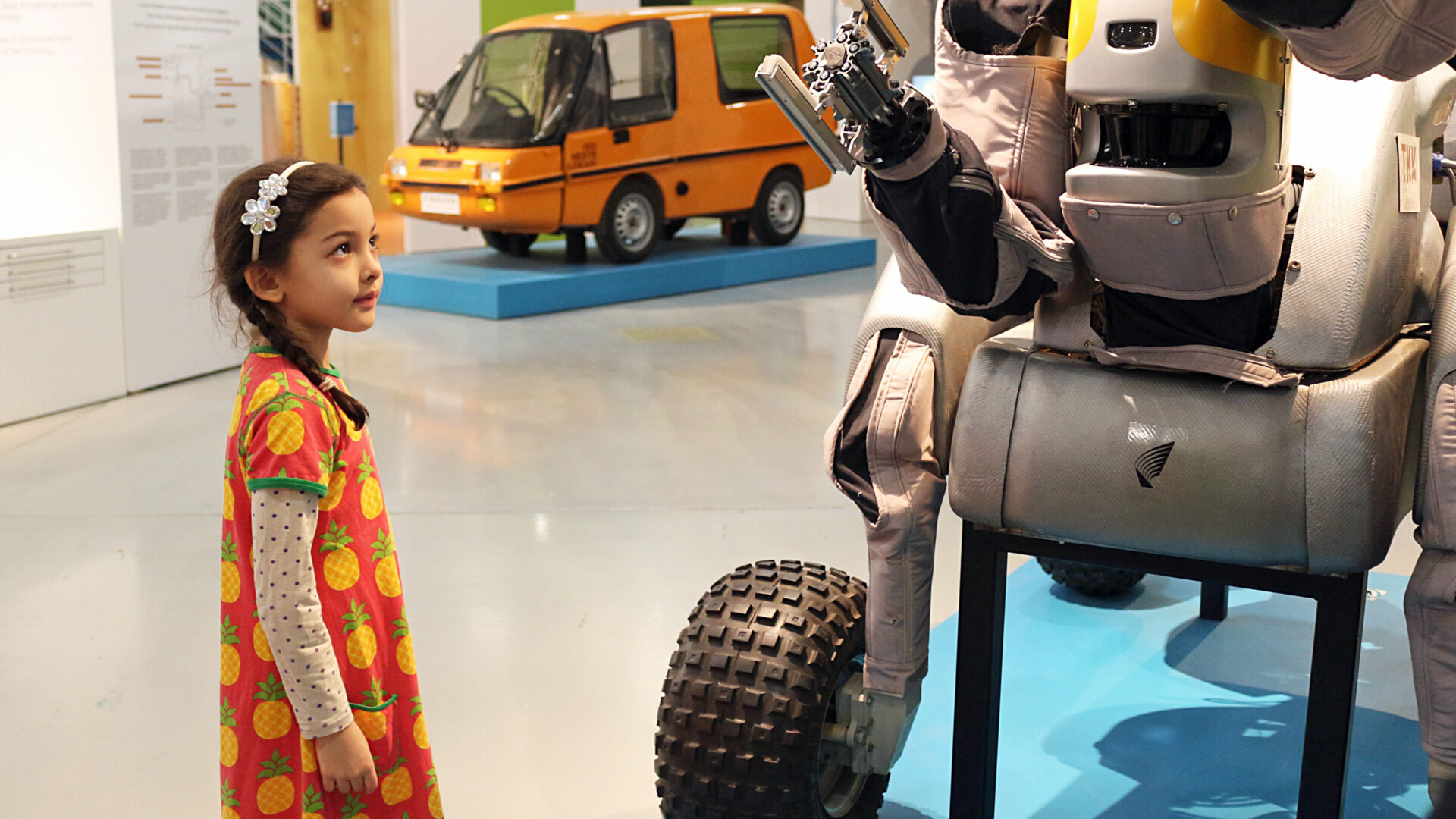Museum is a learning environment in which learning takes place through museum objects and exhibition environments.
Museum is a learning environment in which learning takes place through museum objects and exhibition environments. It’s a huge bank of information, stories and possibilities to learn from the past. A different environment allows different kinds of learning. Well curated museum exhibition builds interdisciplinarity and not only the exhibition but also museum services help to stimulate discussion, promote different viewpoints and cross boundaries between sciences.
Going out of school or any other everyday environment encourages multimodality in learning. At museum surroundings various objects and learning methods help to keep up the learner’s interest, imagination and creativity. In museum space one’s own knowledge is appreciated. Exhibition leaves room for the learner’s own thoughts, explanations, stories and experiences as well as promotes personal and collective engagement. In museum exhibition there’s loads of opportunities both for personal thinking and co-operational interaction, sense-making & creativity.
Then why should innovation education be organized in museums? What do museums have to give to creating innovations?
Innovation is the production of solutions to existing problems – often to various societal challenges. All the Museum objects and artworks tell something about the society, societal challenges and solutions of their own time.
Objects can serve as symbols for societal phenomena or development: a machine or an industrial process in the exhibition can symbolize the transformation of an entire industry. Many objects have an innovative perspective: ideas and technical solutions are taken from previous inventions and applied as part of new ones. Examining historical continuums and contexts opens up perspectives on today’s events, helps to perceive and create new meanings, and even provides insights into understanding the future.
The development stages of various innovations become visible in museums. For example the development and use of technology has always depended on human creativity, competence and problem-solving skills – all skills that are needed in the innovation process. In addition to the past and the present, museum objects and works of art can bring out different images and utopias of the future. Museum items are full of innovativeness: the ability to renew and challenge prevailing ideas and to look at them from a new perspective!
Museum environment allows cultural heritage and art to be examined from a new perspective: as starting points for ideation and problem solving. Environment’s multimodal spaces and multisensoral activities encourage ideation and use of creativity. The museum has a ceiling high and walls wide and there is room for the imagination to fly!
Marianna,
Museum educator
The author held a workshop on museums and innovation education at the ISSM2020 International Symposium of Science Museums in 5.-6. November. The blog post is a summary of the symposium topic.
References:
Hautio, Minna. 2019. Innovation and the Innovation process. Developing and evolving in museums workbook. Aboa Vetus & Ars Nova. www.aboavetusarsnova.fi/files/liitetiedostot/developing_and_evolving_in_museums_workbook.pdf
Kumpulainen, Kristiina; Karttunen, Marianna; Juurola, Leenu & Mikkola Anna. 2014. Towards children’s creative museum engagement and collaborative sense-making, Digital Creativity, DOI: 10.1080/14626268.2014.904370.
Naumanen, Mika (toim.) 2019. Kestävän kehityksen innovaatiot. Katsaus YK:n Agenda 2030 kehitystavoitteisiin ja vastaaviin suomalaisiin innovaatioihin. Valtioneuvoston selvitys- ja tutkimustoiminnan julkaisusarja 2019:62. http://urn.fi/URN:ISBN:978-952-287-795-6
Sorakivi, Heini. 2019. Innovation activities in museums. Developing and evolving in museums workbook. Aboa Vetus & Ars Nova. www.aboavetusarsnova.fi/files/liitetiedostot/developing_and_evolving_in_museums_workbook.pdf

